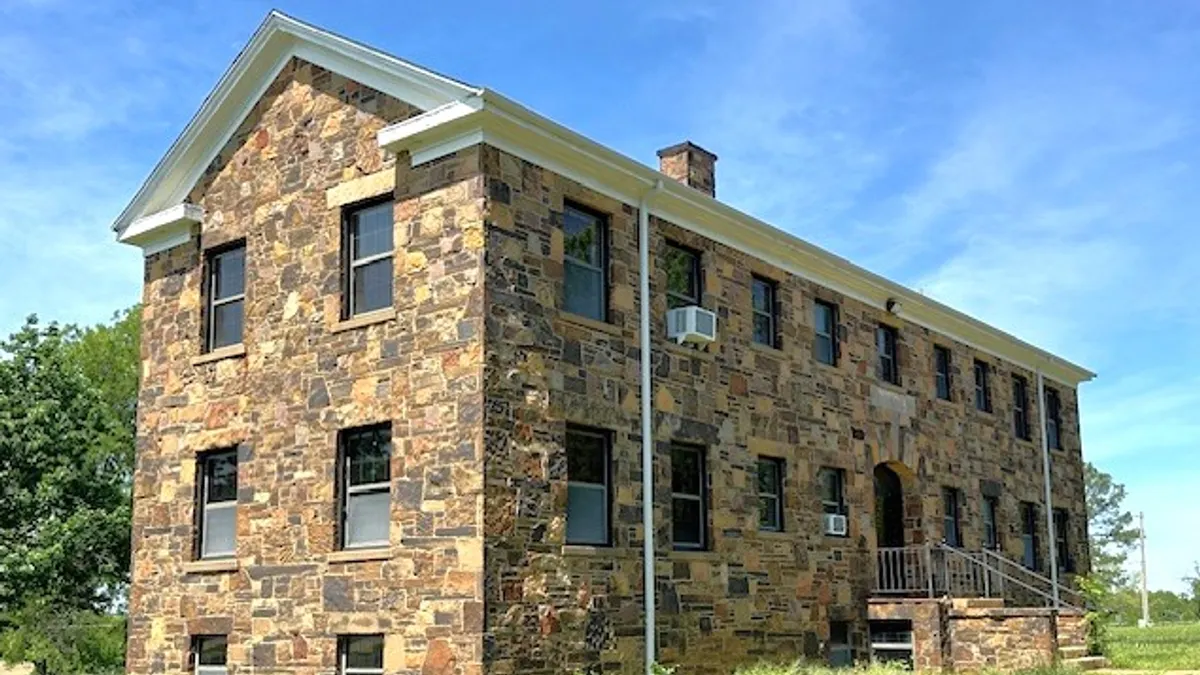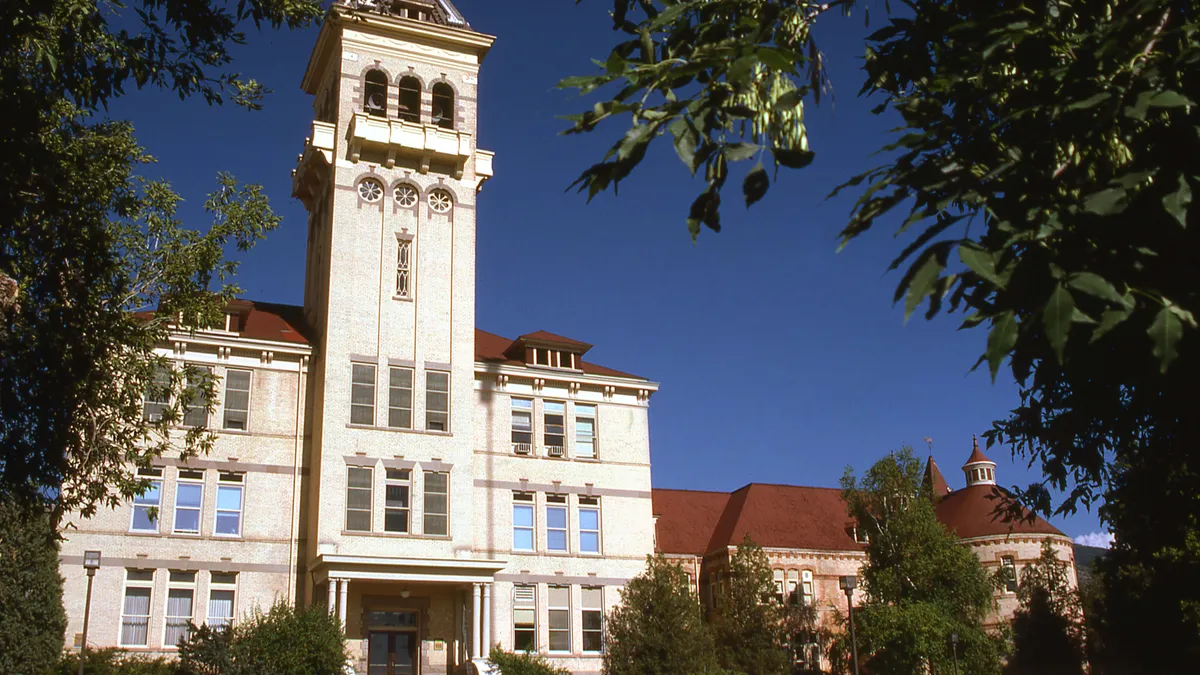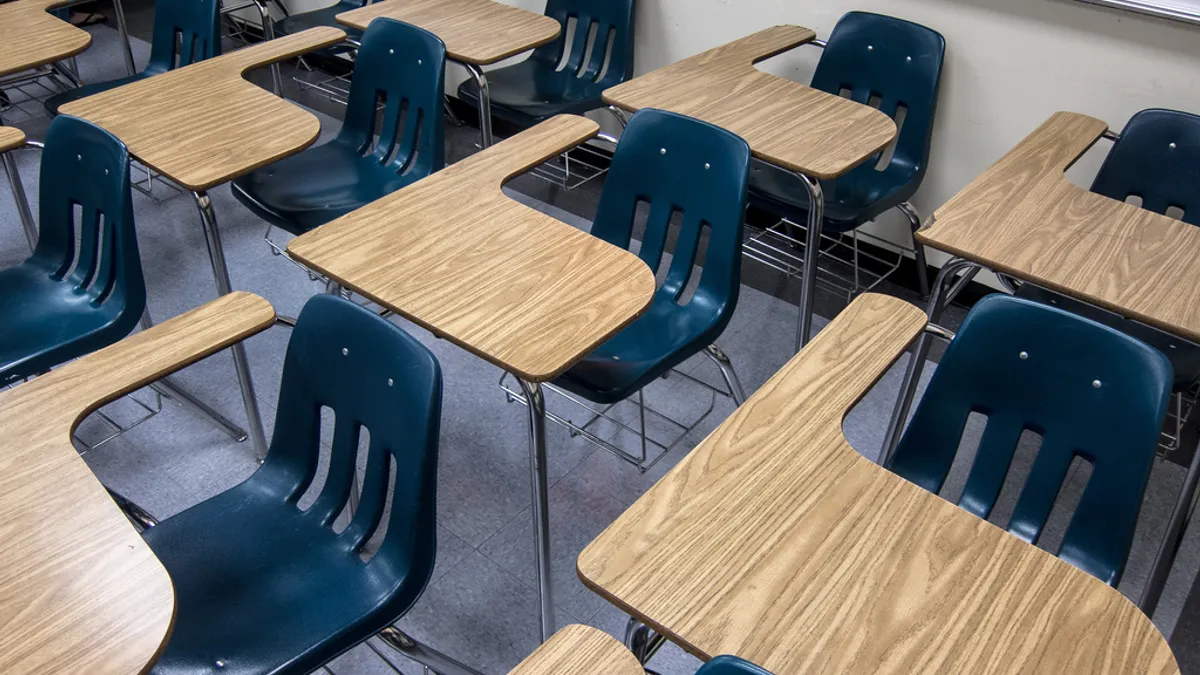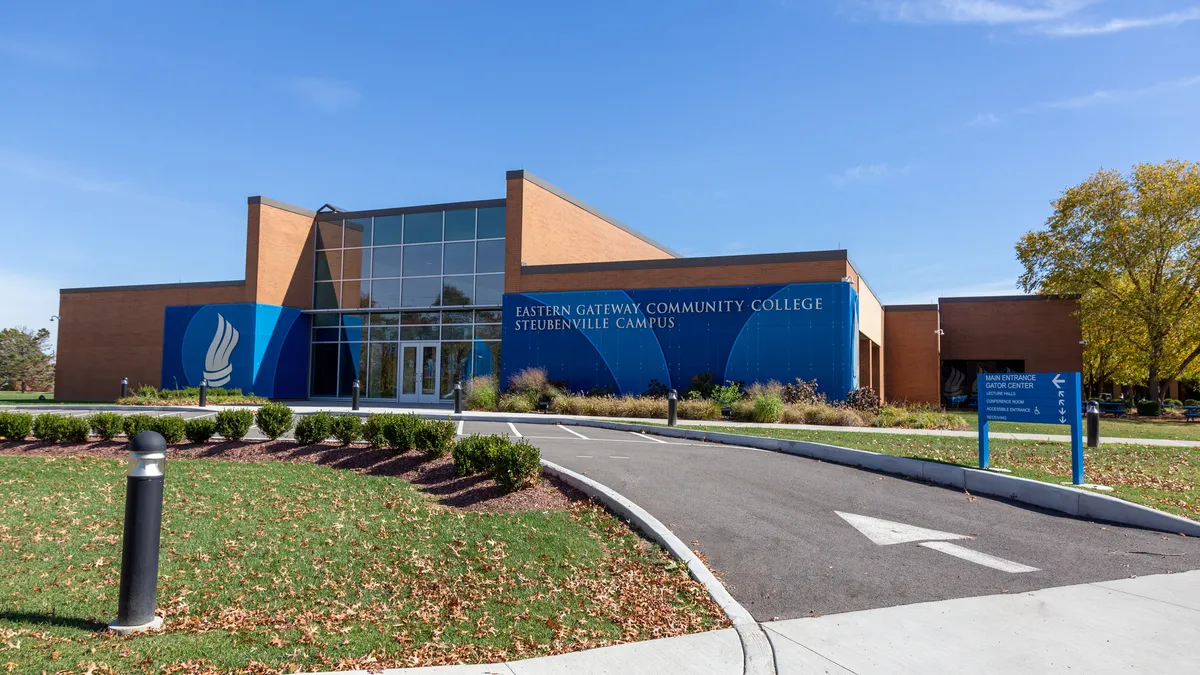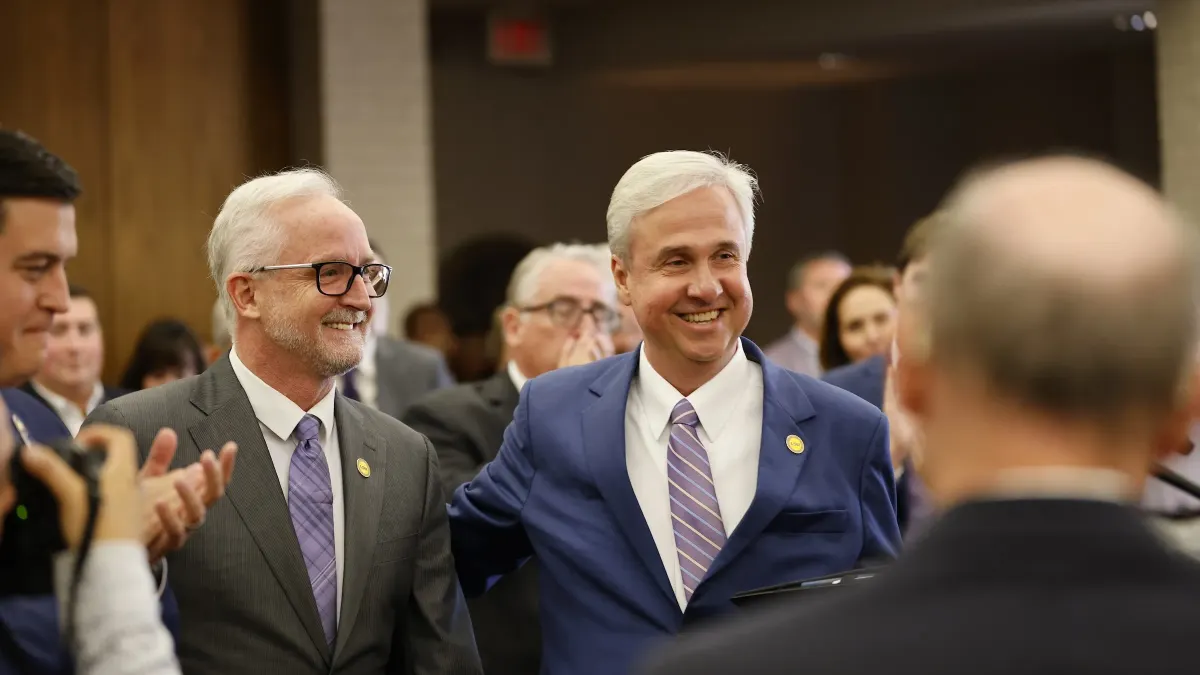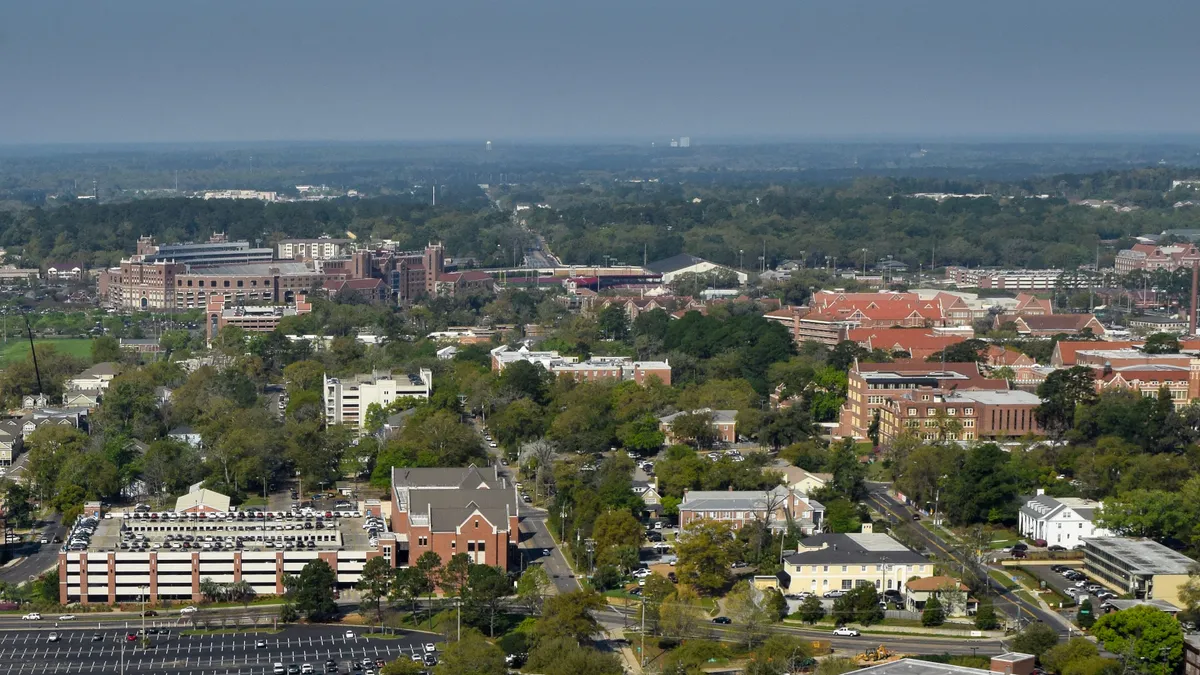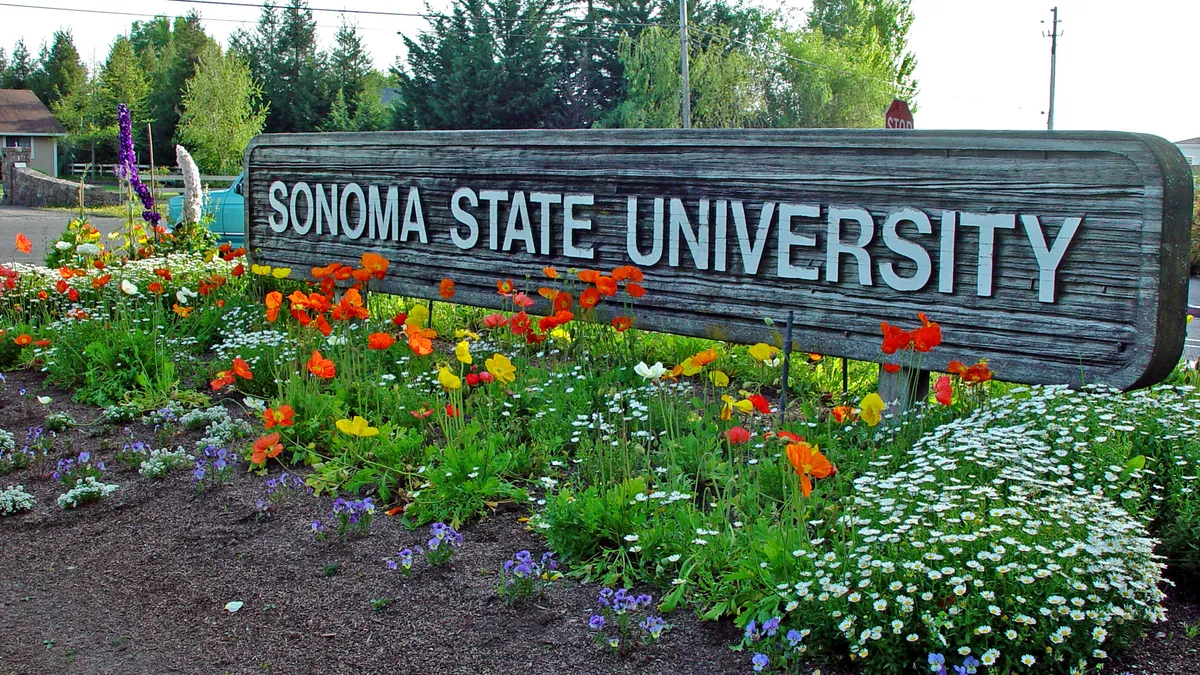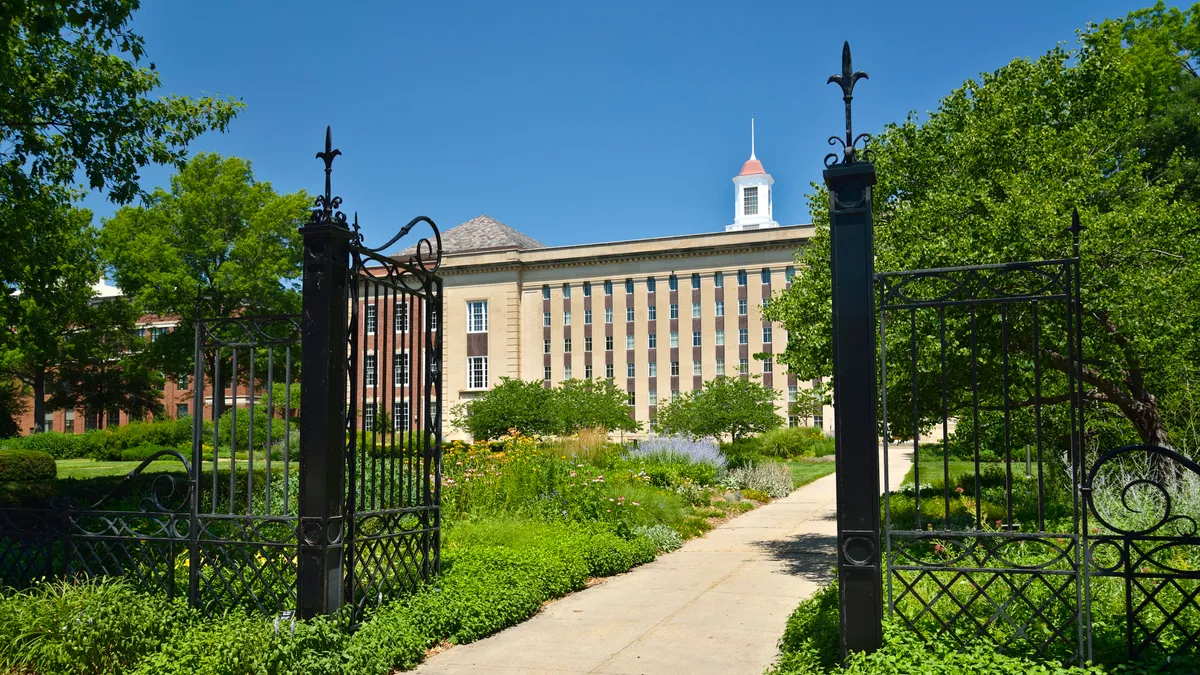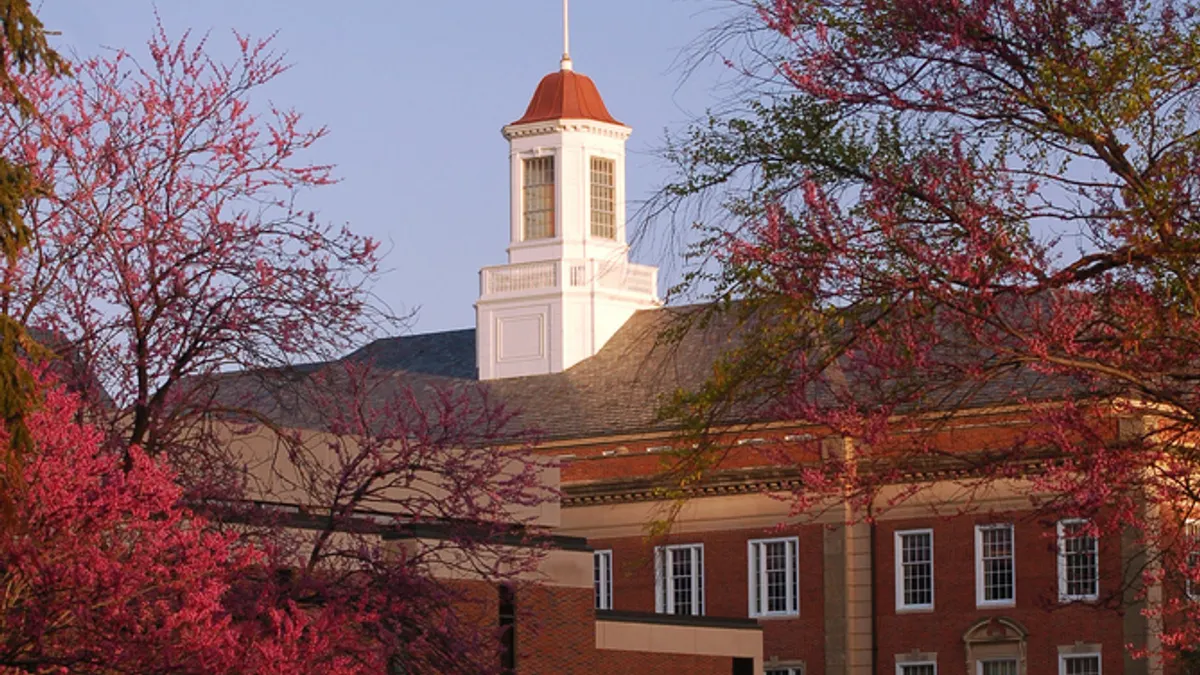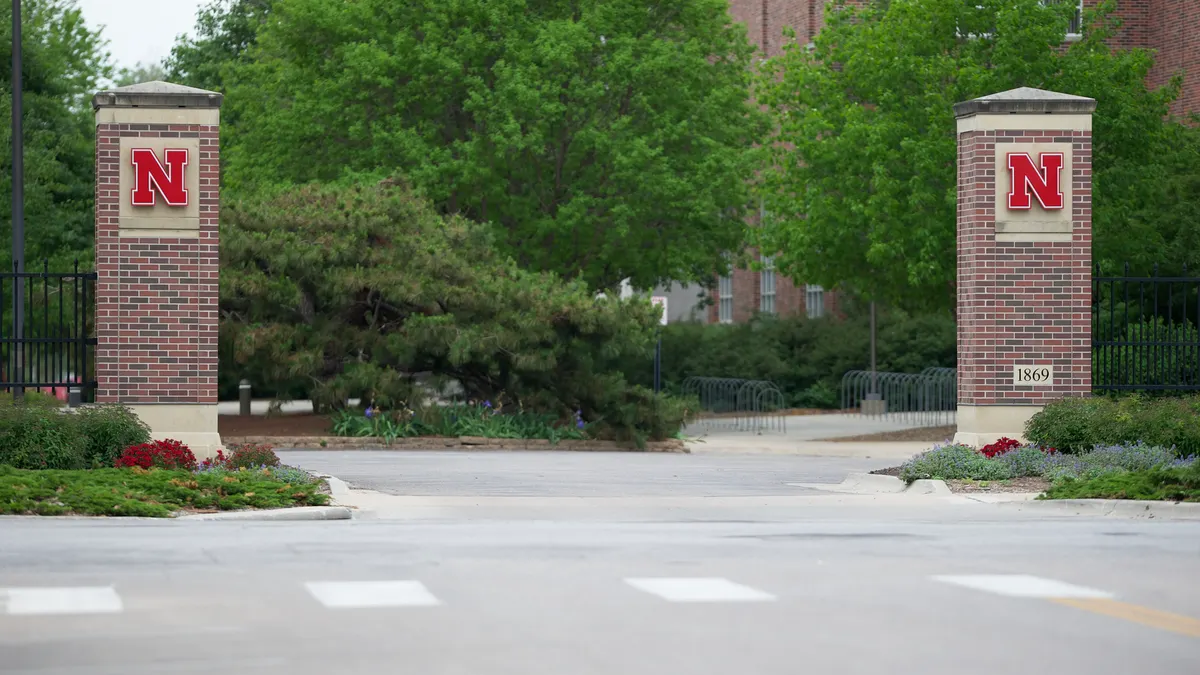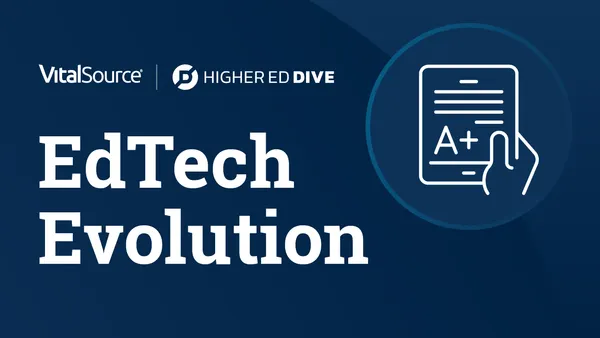Editor’s note: The College Closure Files is an occasional column chronicling why institutions shuttered and what lessons higher education leaders can glean from those shutdowns.
The early years
Originally named “Indian University,” the institution that would later become Bacone College began teaching classes in a Baptist mission house on Cherokee territory in February 1880. Its first cohort numbered just three students. Until its closure 145 years later, Bacone was the oldest continuously operating college in Oklahoma.
The Muscogee-Creek Nation chartered the college and donated the land that would become its permanent home. In its early years, the college focused on educating Native Americans within a Christian framework and with an eye toward assimilating Native students into White culture. The American Baptist Home Mission Societies, which helped finance the institution and held ultimate oversight over its policies, remained affiliated with Bacone throughout its existence.
Bacone College at a glance:
Founded: 1880
Closed: 2025
Location: Muskogee, Oklahoma
Institution type: Private nonprofit, four-year
Student body: 106 (fall 2023)
Mission statement: “As a historic American Indian-serving institution, Bacone College provides a quality, holistic, liberal arts, educational experience for students in a culturally diverse environment, empowering life-long learners with the knowledge, skills, and capacity to be transformational leaders in both Native and non-native communities.”
The institution was renamed in 1910 after its first president, missionary teacher Almon Bacone — whose one-time colleague Laura Rockefeller convinced her husband, John D. Rockefeller, to donate $10,000 to the college.
A later president — B. D. Weeks, who filled the role from 1918 to 1941 — promoted the college as exclusively for Native Americans, recruiting Native faculty and staff, and pushing for classes in Native culture.
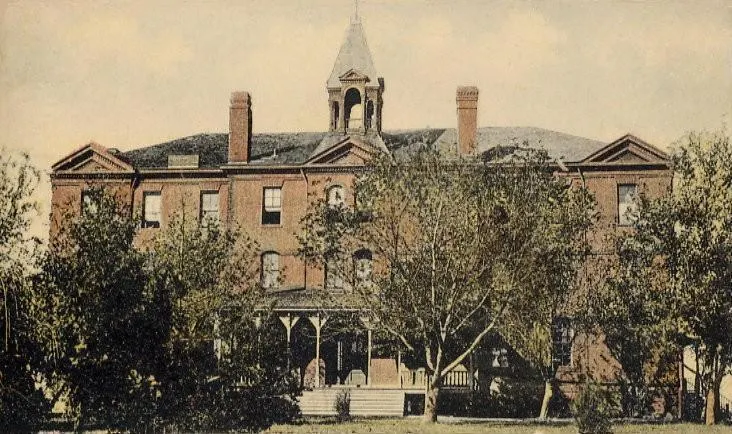
In 1932, Bacone established the Art Lodge, renamed Ataloa Hall in 1967, which was the vision of Ataloa McLendon, a faculty member and citizen of the Chickasaw Nation. The arts center, featuring a fireplace built with donated stones from sites of deep importance in Native American history, helped forge a new field of Native art at Bacone.
The original Art Lodge served to “inaugurate one of the college’s golden eras,” according to a 2010 essay about Bacone by Cary Nelson, then-president of the American Association of University Professors.
“In the Bacone style, nostalgic, sometimes mythical, historical subjects were given stylized representation within clearly outlined areas of often brilliant color,” Nelson wrote. “In the process, what for earlier artists had amounted to a form of historical notation and religious expression evolved into a modern graphic style that influenced Native American art for the rest of the century.”
Decades later, some faculty would come to question the college’s adherence to its mission of serving Native students and communities. By the early 2000s, financial pressures, Nelson argued, gave the administration at the time the “unacknowledged opportunity to eliminate its more outspoken Indian faculty members while retaining those who accepted administration edicts.” In his view, repeated firings and the undermining of shared governance led to a culture of fear and damaged Bacone’s mission as a Native American-focused institution.
The financial woes only intensified with time.
“Although I knew that Bacone had been experiencing difficulties long before I came along, I was not fully cognizant of the financial problems the college was facing, or its lack of focus on its founding mission,” Patti Jo King, a Bacone faculty member from 2013 to 2019 who served as American Indian Studies chair and director of the college’s Center for American Indians, said by email.
Entwined with its financial issues were struggles to recruit and retain students. This, too, King saw as a failure of Bacone leaders to live up to the college’s mission.
“A key element in recruiting American Indian students is the need to strengthen the visibility and presence of native students on campus,” King said. “This has to be done through community outreach and collaboration with tribes. It’s also vital[ly] important to raise awareness and develop a more nuanced understanding of tribal governance, enterprise culture, and custom” among administrators, faculty and staff.
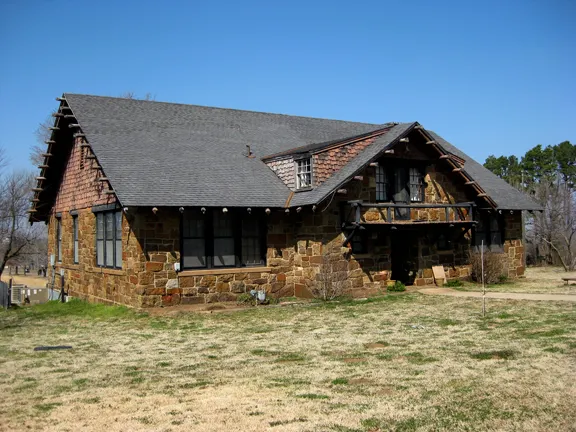
But, she went on to argue, “There were never any serious efforts to educate staff or faculty about how to communicate with, or address the needs of Indian students in culturally appropriate ways.”
In its final years, only a fraction of the staff were Native Americans. Of the college’s 16 full-time faculty members in 2018, six were American Indian or Native Alaskan, while seven were White, according to federal data.
Along with understanding tribal culture and social networks, stronger retention needed active dialogues on campus — including with students themselves to understand their needs, especially those who may have been first-generation college attendees.
In more recent years, Bacone sought tribal college status, which would have made it eligible for additional federal funding. The Osage Nation and Cheyenne, Arapaho, Kiowa and Otoe-Missouria tribes agreed to charter it. However, the college never won tribal college status from the federal government.
King pointed out numerous requirements for tribal college status where Bacone fell short, such as formal control by a recognized tribe or multiple tribes, as well as a Native American-majority governing board and a demonstrated mission that meets the needs of Native Americans.
Others have noted that tribal colleges typically are sponsored by a single tribe, but Bacone throughout its history aimed to be an intertribal institution.
Ultimately, Bacone’s long-running financial struggles caught up with it before it could ever gain the tribal college status it sought.
Path to closure
By fall 2023, Bacone had just 106 students, less than half the number of just five years earlier and a fraction of the 1,184 students the college enrolled in 2010.
Those years ushered in more financial crises. Nicky Michael, who served as interim president until April 2024, noted a “near closure” of Bacone in 2018. But the institution kept limping along.
As the student body shrank, and revenue became scarcer, leadership grew more unstable. In the last 10 years of Bacone’s life, the institution went through four presidents.
And like every other college, Bacone also had the pandemic to navigate.
The campus "has endured isolation from its alumni and friends. We have shifted back and forth to remote and hybrid forms of instruction,” then-President Michael wrote to the college community in 2022. “We have cancelled social events and pow wows and prayer meetings, and all the things that keep us connected with our supporters.”
In February 2024, The Associated Press ran a story stating that Bacone was on the brink of closure.
The story — by Graham Lee Brewer, who covers Indigenous communities — detailed lawsuits, financial debts, threats of accreditation loss, buildings in disrepair, Native works of art on campus left molding for lack of funds, and embezzlement accusations leveled at school administrators. The deep distress prompted administrators to suspend classes for the spring 2024 semester — not a good sign, to put it mildly.
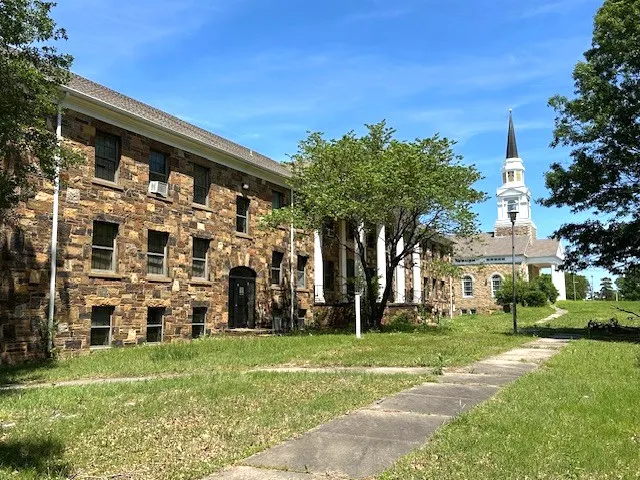
That April, the college replaced Michael as president with Leslie Hannah, a board member. The institution issued a statement denying it was closing and saying it was working on a revitalization plan.
However, two months later, the college filed for Chapter 11 bankruptcy. Hannah told Inside Higher Ed then that the institution didn’t plan to close, even though bankruptcy rendered it ineligible for federal student aid funds.
A month later, In July, the Higher Learning Commission dealt a severe blow, revoking Bacone’s accreditation. The accreditor’s letter to Hannah listed a long, dismal litany of problems: “limited interaction” between the board and the college’s finance chief, the suspension of new enrollment, a lack of dedicated faculty starting that May, insufficient funds to support the college’s educational function, and many other issues.
“We have cancelled social events and pow wows and prayer meetings, and all the things that keep us connected with our supporters.”

Nicky Michael
Former Interim President of Bacone College
The bankruptcy process would turn up yet more troubling issues. In May 2025, the U.S. bankruptcy trustee assigned to the case accused Bacone officials of “gross mismanagement.” Specifically, the trustee alleged that Hannah directed the college to make a payment of $16,500 on a loan taken out in his name.
Bacone's only hope was for an investor to come along and purchase its real estate assets, the trustee said in the filing, adding, “This is the best option for creditors to get paid.”
The trustee recommended that the federal court handling Bacone’s case convert the college’s bankruptcy to a Chapter 7, entailing a managed wind-down overseen by a third party. Shortly afterward, the judge overseeing the case did just that, sealing Bacone’s fate and sending the institution into liquidation.
Speaking to the Muskogee Phoenix, Hannah called the decision a sad ending for the college. “My understanding is this is the death of Bacone,” he told the newspaper, adding that Bacone’s attorney told him “to not pay any more bills, to not write any more checks. To cease all operations.”
What can we learn?
Throughout its life, Bacone faced struggles both with finances and with its mission as a Native American-serving institution.
Its proportion of Native students fluctuated widely, with Native American enrollment making up 75% of students in 1956 and 63% in 1970 before falling to 44% in 2004. By 2018, it had sunk to 34%. The proportion would rise to 60% in 2020, but the college’s overall population had bottomed out by then. At the time, Bacone was also exploring becoming a tribal college, which requires a Native student population over 50%.
In King’s view, Bacone’s failure is tied in large part to an inability to recruit and retain Native students.
The college “needed to make a real effort to know and listen to the local tribal communities,” something they never did, King said. “Administrators, faculty, and staff often fell into the bad habit of lumping all of the Native students together under the general heading ‘Indian.’ That is a particular problem here in Oklahoma, a state with some 37 federally recognized tribes.”
The past twenty-odd years also brought pervasive organizational controversies, from the struggles over shared governance that Nelson chronicled to the “gross mismanagement” of resources that the U.S. trustee alleged in the college’s bankruptcy proceedings.
“In a nutshell, Bacone failed because of long-term malfeasance on the part of a succession of inexperienced and grifting administrators.”

Patti Jo King
Former Bacone College faculty member
King offered a scathing assessment of the college’s governance over time: “In a nutshell, Bacone failed because of long-term malfeasance on the part of a succession of inexperienced and grifting administrators.”
Whatever the ultimate cause, Bacone was in a financial tailspin in its final years. As with many small, tuition-dependent colleges, enrollment declines and financial distress become a self-reinforcing doom loop.
To some extent, enrollment declines can be managed through. Colleges can downsize, refocus, shore up their cash positions and balance sheets, and double down on whatever unique role or niche they occupy in the higher education world. None of that is easy, and often it takes more resources to achieve change — at the very time when struggling colleges are focused on survival and austerity.
But effective decision-making, collaboration across the college, and transparency with stakeholders also play key roles in sustaining an institution.
“You have to be transparent with your campus,” said Chuck Ambrose, a senior education consultant with law firm Husch Blackwell who has served as chief executive at several colleges. “If I were going to work somewhere, I’d want to know the model is working.”
Acting swiftly to reduce costs or find a potential institutional partner, including seeking a merger — or both — is critical. Difficulties are only compounded by time. When Bacone closed, it had already lost most of its student base and been in a deep tailspin for years. Its buildings were in poor condition, and it didn’t have the resources to fully support the students it still had.
The opportunity for transformation had come and gone long before it actually closed. In the absence of strong leadership, resources or a partner, or some combination thereof, the college — the oldest in Oklahoma — succumbed to its challenges. While a judge's order forced the liquidation of Bacone, that was ultimately a formality for a fate that had likely been sealed years before.


